► Ford’s new small van-ish MPV tested
► Funky looks, and it’s a Puma underneath
► Petrol manual or auto for now; prices start from under £26k
Well, doesn’t this look funky? For a small van, we’d challenge anyone who can find a van-based people carrier bolder and more interesting to look at than Ford’s new Tourneo Courier.
It’s based on the same platform as the Puma (and built in the same factory in Romania as it) as well as the departed Fiesta (RIP, forever in our hearts, etc.). It’s designed to seat five, carry a lot of your stuff and fit into family life easily. Looking funky, particularly in the ‘Bursting Green’ and white colour combo pictured, is a bonus.
Dimensions-wise, the Tourneo Courier has grown longer and taller than the previous generation – mainly so the Transit Courier panel version version can feature a larger cargo load area able to fit two pallets inside. But that means the latest Courier strays into the same broad part of the market as the already-on-sale Tourneo Connect (which shares its underpants and tech with the VW Caddy). Ford’s aware of this, and says the Courier offers things the Connect doesn’t and vice versa; the Courier has a lower entry price and is meant to be the more stylish of the two, while the forthcoming EV model will provide another powertrain the Connect currently can’t.
What versions of the Tourneo Courier are there?
For Europe, Ford is offering Trend, Titanium and Active specifications with the UK market only selling the upper two. Trend features a digital instrument cluster, SYNC 4 infotainment with as-standard wireless Apple CarPlay and Android Auto, all of the latest safety kit including cruise control and traffic sign recognition and steel wheels with wheel trims. Titanium adds in alloys, some tartier design details, climate control and keyless start among other bits. Active (pictured below), meanwhile, is designed for that #lifestyle audience with bespoke alloys, chunky body cladding, its own upholstery design inside as well as parking camera and adaptive cruise.
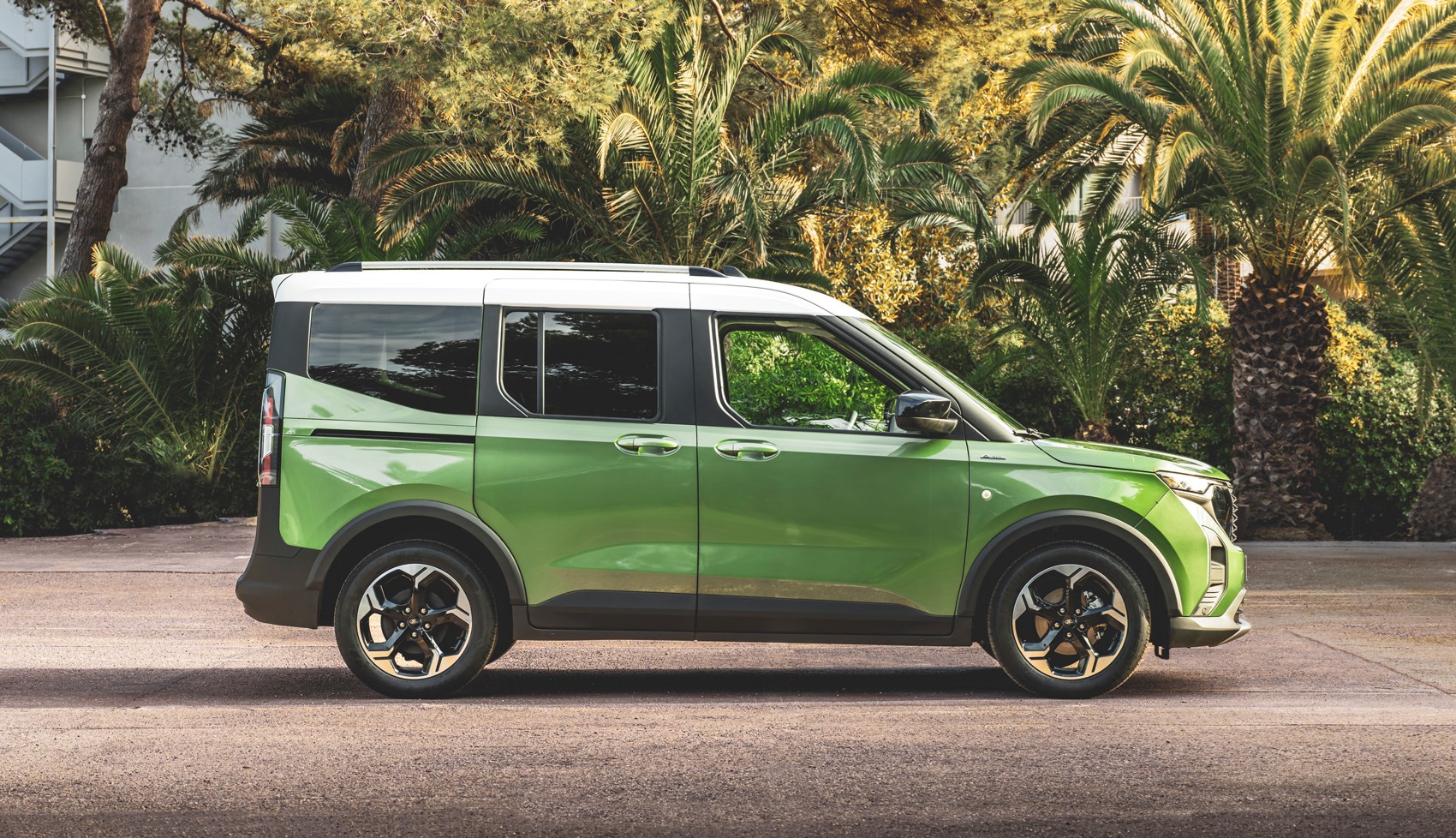
The sole engine available is Ford’s 1.0-litre, turbocharged three-cylinder EcoBoost engine developing 123bhp, and is available with either a six-speed manual or a seven-speed dual-clutch automatic. Prices start from under £26k in the UK for a Tourneo Courier Titanium with a manual ‘box.
And then, of course, there’s the Transit Courier – the panel van version that’s launched at the same time; that’s available with diesels that better suit the fleet market as well as some handy cargo-focused touches to maximise the amount of stuff that can be carried.
What’s the Tourneo Courier like inside?
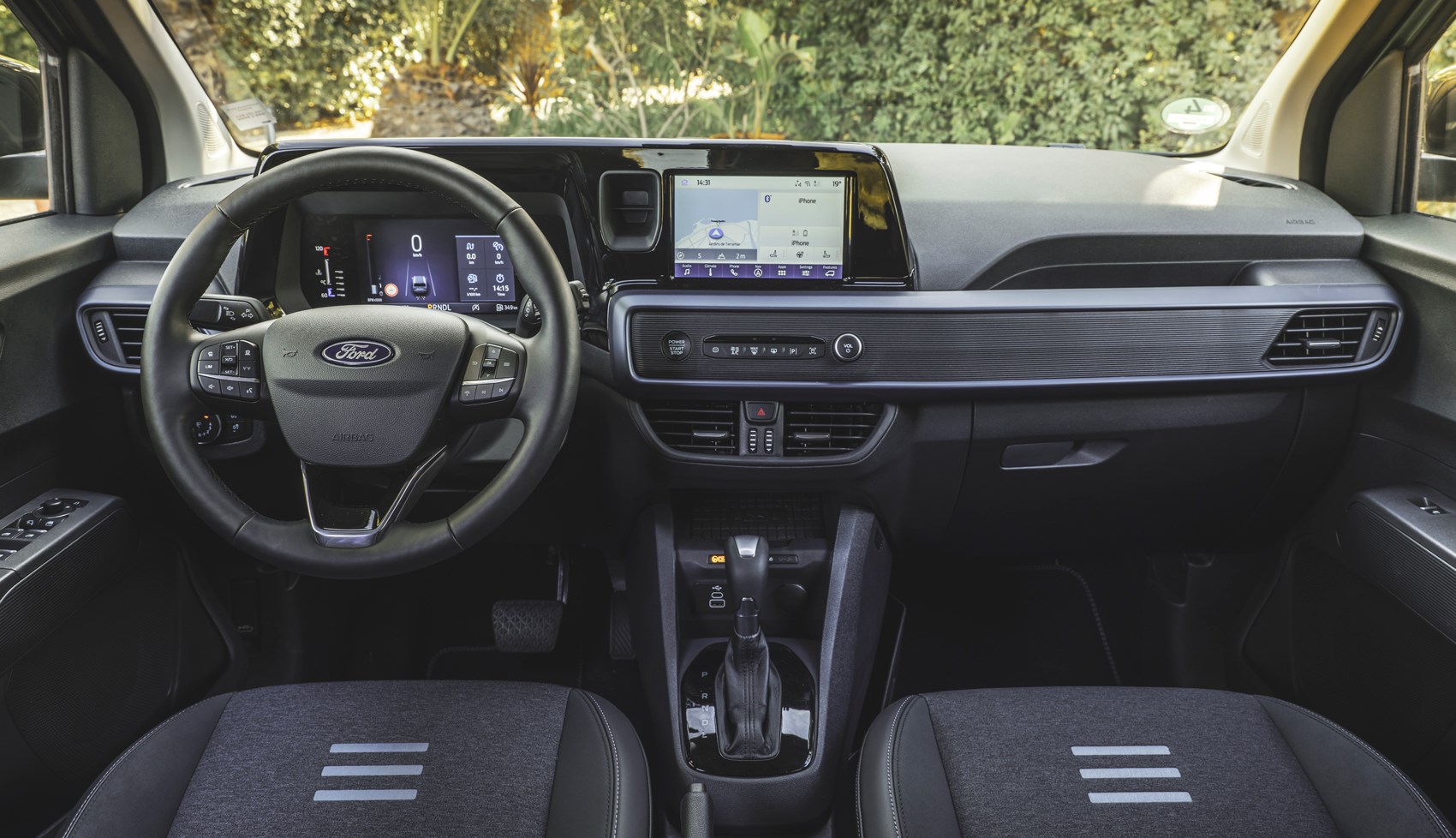
Utilitarian, but not in a dull or overly cheap kind of way. It’s also (thankfully) not just a clone of the Fiesta/Puma’s interior either – some thought has been put into it. There are storage cubbies in the dashboard top, both behind the instrument/screen cluster and on the passenger’s side, and there are even some neat stowage ideas like a thin paperwork/laptop holder by the passenger’s leg as well as some overhead stowage.
Another point Ford is keen to point out is the oddly-shaped random bit of plastic sticking out of the dashboard beside the infotainment screen – product managers tell us it’s designed for proprietary phone clips as so many (mostly Transit, rather than Tourneo) users still wanted their phone mounted visibly close. Having this anchor point means you won’t need to suction a holder onto the windscreen or clip it to a flimsy air vent fin.
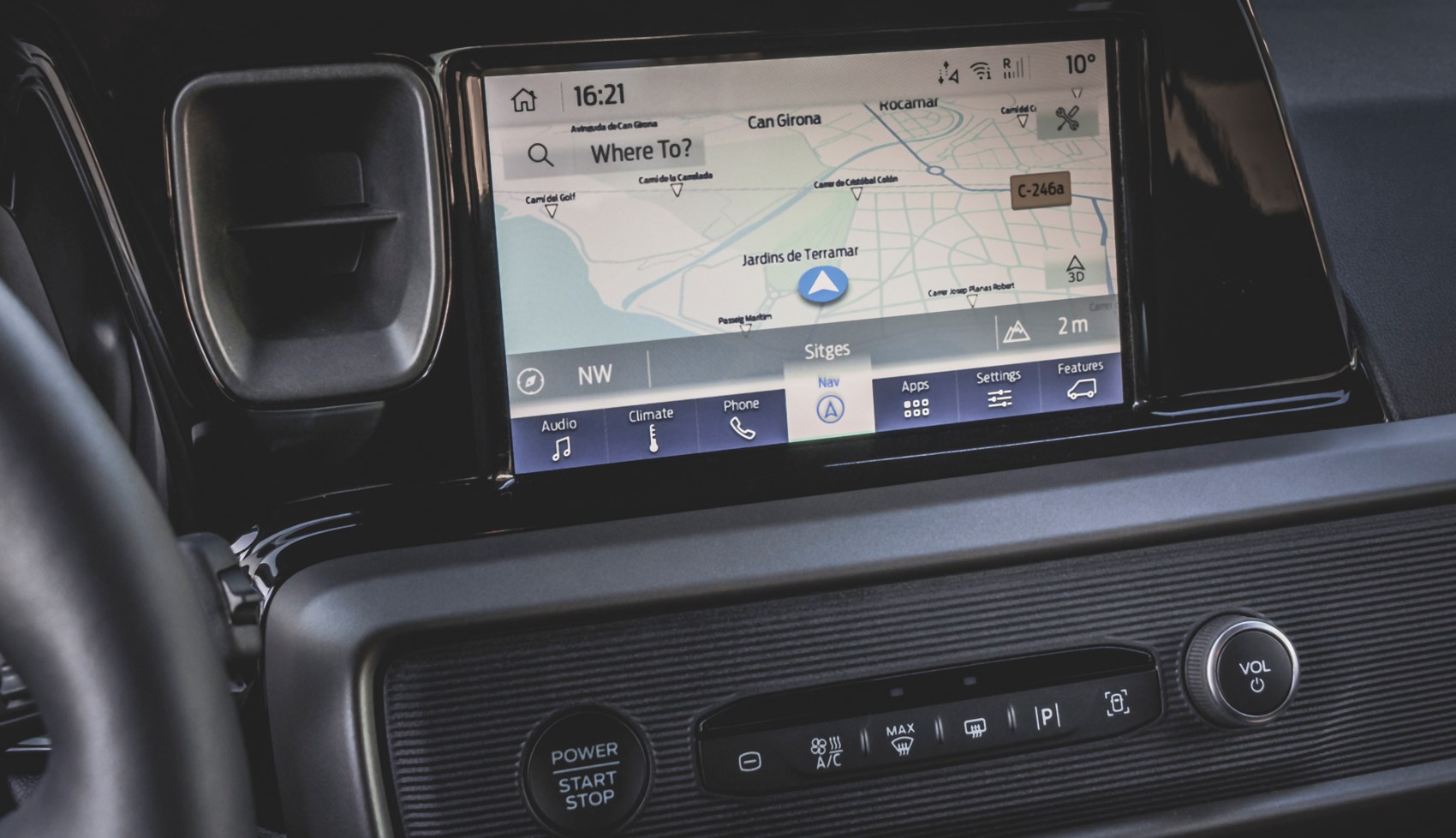
There are also very few physical buttons here, meaning you’re relying on the standard SYNC 4 infotainment to do a lot of the heavy lifting. And… it’s fine – if a bit clunky and menu-heavy. There’s only a set of shortcuts and the starter button in the centre and points for the lighting – and that means a fiddly screen-based climate control set-up as well as several prods to turn off the mandatory audible speed limit warning bong every journey.
The driving position is highly adjustable and allows taller drivers to still sit low, although the digital instruments are starkly vertical, so some clever steering wheel adjustment might be needed depending on how you sit. Higher-spec models feature AGR-rated seats (AGR is the German ‘Campaign for Healthy Backs’ organisation) that provide plenty of support for long journeys. But, even if you don’t spec them, the seats are reasonably comfortable enough for long journeys and don’t make you feel like you’re perched on the car rather than in it.
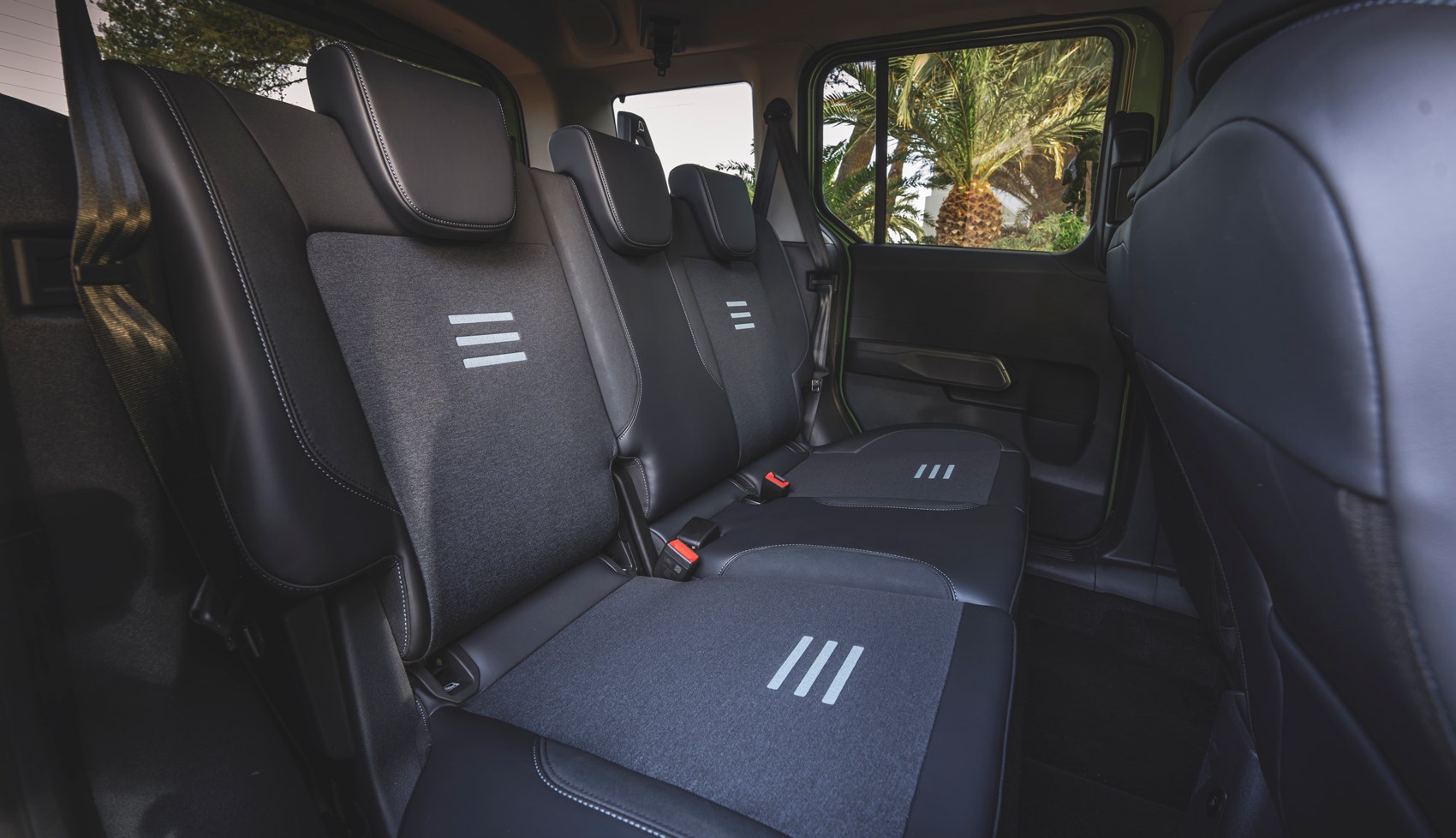
As for practicality, the Courier comes armed with some more clever ideas. The boot space is large (and 480 litres larger than the old Courier from boot floor to roof) as well as square, with a low loading lip. As well as some hooks for hanging bags, Ford has included a hinged, pop-out box that can be used for storing small items or even dirty things like muddy walking boots. The box can be lifted out and washed clean for later use. Those in the second row will benefit from great headroom and decent legroom even behind tall drivers, but the seat bench itself doesn’t slide or recline, is only split 60/40 and only features two sets of ISOFIX points.
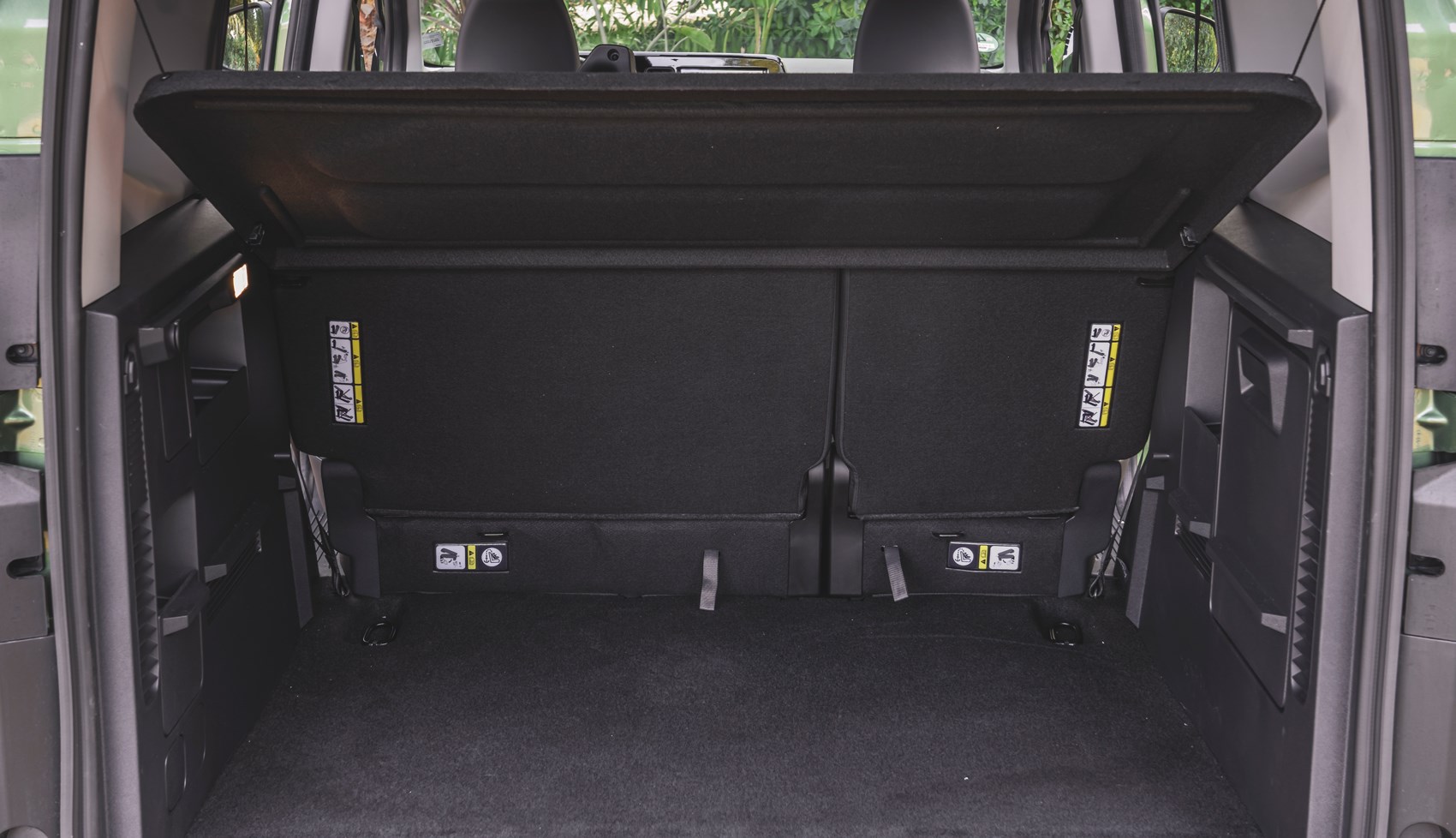
What’s the Tourneo Courier like to drive?
Overall, it’s a bit of a sweetie. But that’s to be expected, given it runs on the same platform as the Puma and Fiesta – two cars that have always been known for their great handling characteristics. While there are naturally some engineering tweaks for the Tourneo Courier compared to the Puma (like its own steering geometry and a tougher rear suspension setup to handle more weight), overall it feels remarkably similar – and that’s good.
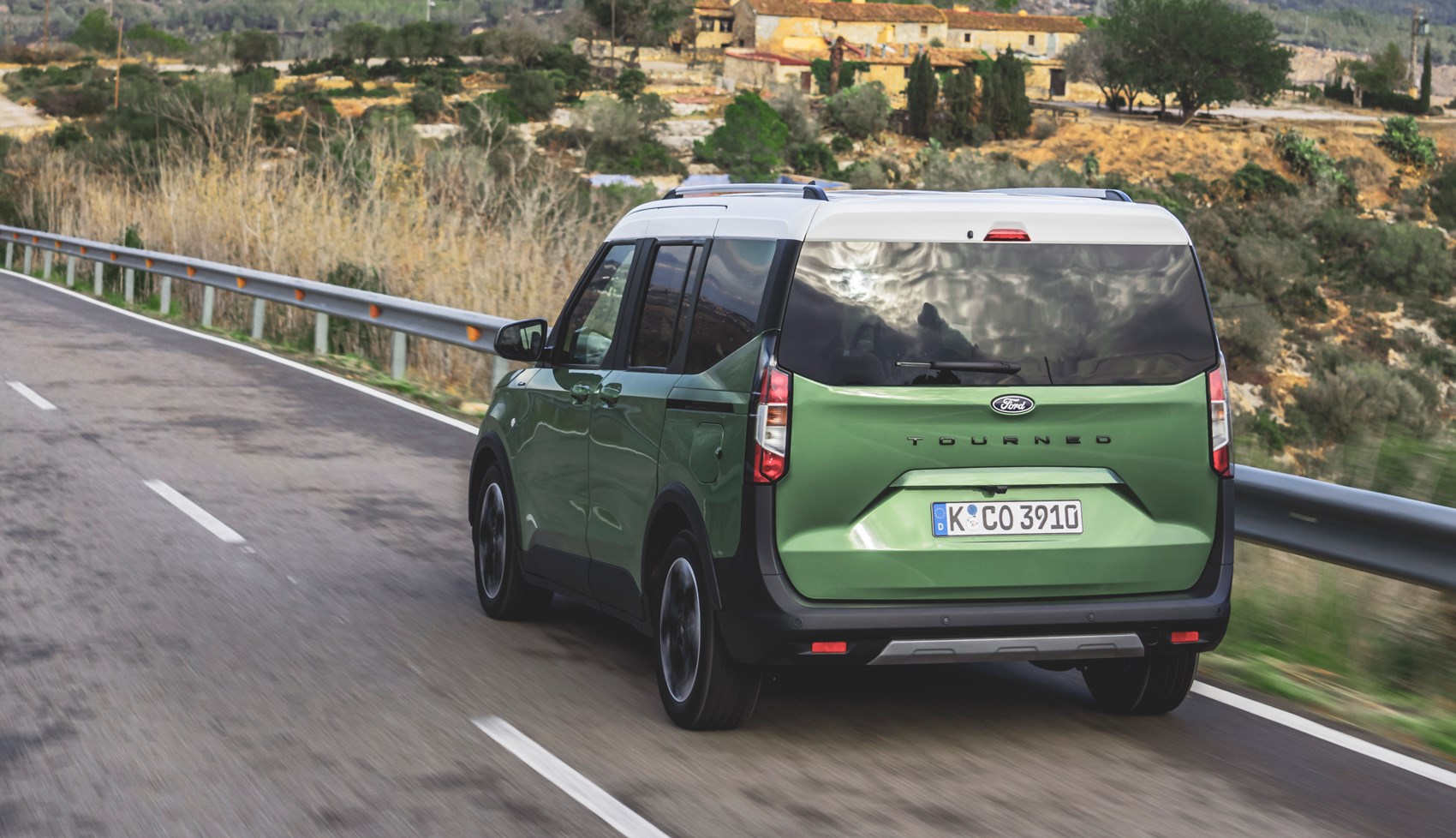
And few besides Ford can make a manual transmission and pedal box both engaging to use and smooth to live with. The clutch bites early, the brakes feel firm and crisp and – despite being a boosty three-cylinder engine – throttle response is reasonable. Acceleration feels more than enough from the buzzy three-cylinder, and can still pull skin off custard if it’s fully loaded. How do we know? We also tried EcoBoost Transit Courier models with a 500kg load in the back and didn’t feel much in the way of a performance loss.
The ride and handling is neatly balanced, too. There’s some body roll through the corners, yes, but the Courier’s suspension setup handles ruts and potholes well enough. What’s also commendable is the lack of wind noise despite quite a bluff nose.
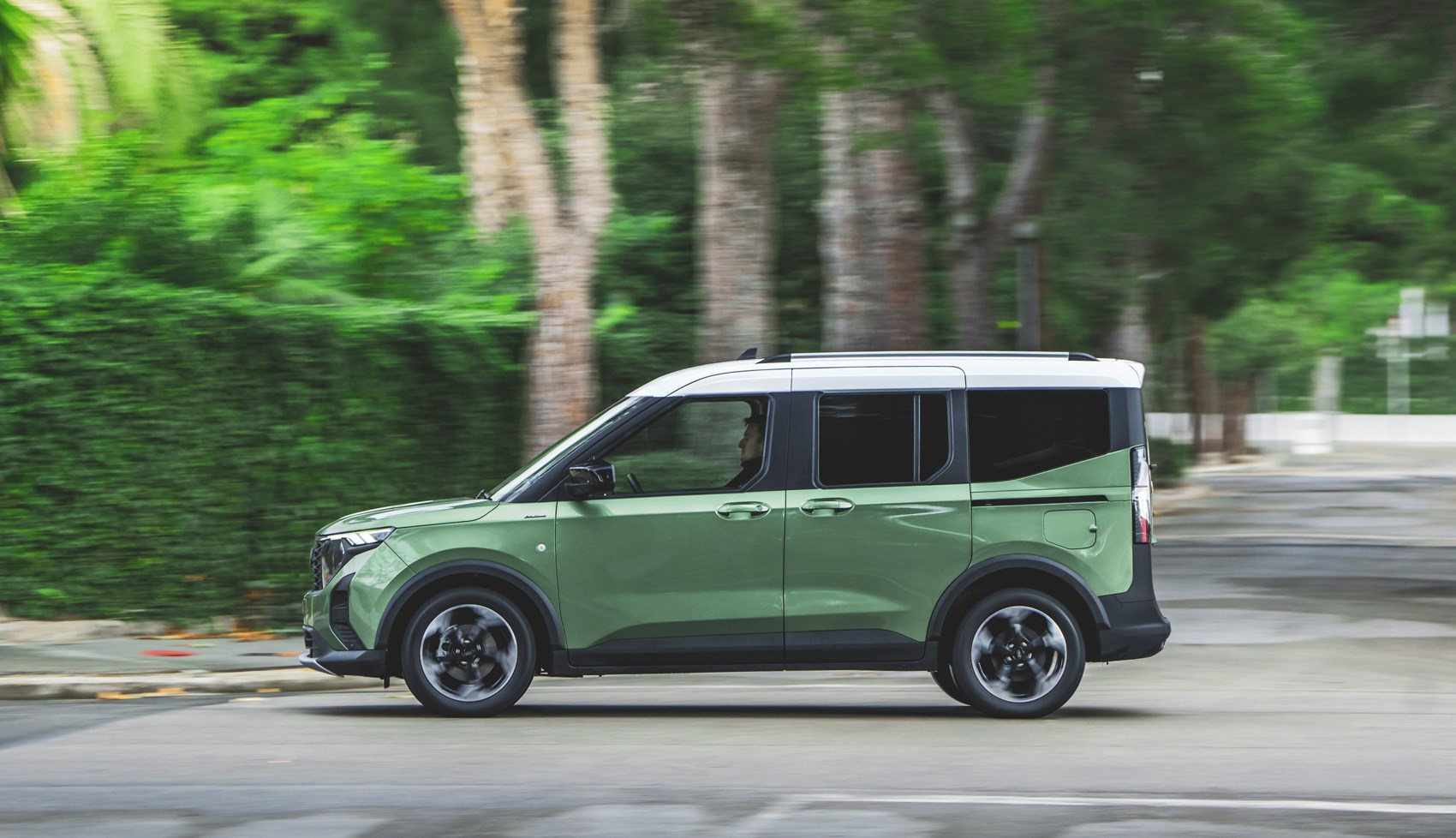
The only significant black mark against it is the dual-clutch automatic. It’s immediately obvious the ‘box is designed for maximum efficiency, upshifting as early as it can and broadly changing gears smoothly. But when you want to exploit a small gap at a roundabout or prepare for an overtake, downshifts are frustratingly ponderous and require severe pokes of the throttle to get a more appropriate gear. Having an auto option will be useful for many, but this one manages to sap some of the fun out of what is a sweetly balanced small family car – particularly when there aren’t any steering wheel-mounted paddles for shifting gears yourself.
Verdict: Ford Tourneo Courier
Has Ford just made a van… cool? Probably not, but the Tourneo Courier is a very well-rounded, smartly dressed, deeply likeable and cleverly packaged product. To our eyes it looks bold and interesting, despite being a markedly sensible and logical car filled with proven engineering. It almost handles like a Puma, zips around eagerly with its buzzy three-cylinder and manages to look good doing it.
The auto’s not brilliant and the button-light interior interface might be fiddly but, frankly, the Courier’s biggest thorn in its side will be the Dacia Jogger, let alone slightly larger Stellantis MPVs (like the Peugeot Rifter or Citroen Berlingo) available for similar money. The Ford handles better, feels better built and ties on charm compared to Dacia’s maxi mover, but the gulf in price will be hard to ignore for some.
Specs are for a Tourneo Courier Titanium manual